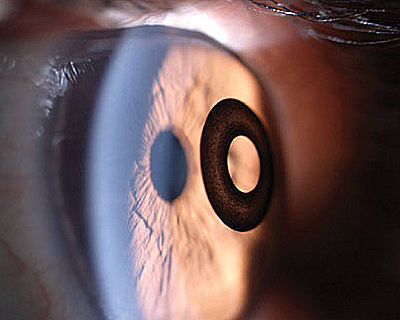The first corneal inlay for vision correction surgery in the United States to receive FDA approval is KAMRA.
Presbyopia is a common age-related vision issue that is treated by corneal inlays, commonly known as corneal implants. The nearsightedness caused by this ailment makes it challenging to read close-up text in a book or on a computer screen. There are additional corneal inlays being developed, even though KAMRA is the only one that is currently on the market in the United States. However, KAMRA is the only corneal inlay option and it’s getting a lot of positive buzz.
KAMRA might be right for you if you frequently lose or break your reading glasses, are tired of the inconveniences that come with wearing contacts, or are just searching for a different approach to near vision correction.
What you should know about KAMRA Inlays is as follows:
For persons between the ages of 40 and 60 who have poor near vision but adequate distance vision, KAMRA is designed (presbyopia). You may not be eligible for KAMRA inlays if you have undergone cataract surgery, have dry eye syndrome, glaucoma, diabetes, macular degeneration, have recently noticed a change in your distance vision, or you are taking certain medications. You should consult an ophthalmologist to find out if you qualify for KAMRA inlays.
The minimally invasive KAMRA placement process takes about 15 minutes to complete. The tiny implant is thinner and lighter than a regular contact lens and is 3.8 mm in diameter with a 1.6 mm aperture in the middle. It weighs less than a grain of salt. It is implanted several layers into the cornea over the pupil’s centre during surgery.
The outpatient operation is carried done in the convenience of your eye doctor’s office and does not require stitches. Recovery times can vary, and your consultation will cover them.
The KAMRA inlay is only placed in one eye, the non-dominant eye, unlike certain other ocular implants.This is crucial for accommodating near- and far-sightedness without the aid of glasses or contacts. Although near vision is improved by the non-dominant KAMRA implanted eye, far vision is controlled by both eyes.
One of the best features of anything is being able to change your mind and revert back to the way things were because the KAMRA inlay is fully reversible, it can be surgically removed, allowing you to return to using reading glasses and contact lenses to enhance your near vision. During clinical study, vision returned to the same level as it was prior to implantation for most patients.
It is conceivable for patients to have some degree of vision impairment.
When using a computer, tablet, or even a mobile device, people with presbyopia may regularly fight the impulse to look for their reading glasses or put on their contact lenses. This may cause eye strain, which may culminate in computer vision syndrome (CVS), also known as digital vision strain. Patients using KAMRA who improve their near vision will also have better computer vision, which will help counteract many of the negative effects of CVS.
A safe, FDA-approved, minimally invasive surgery is the KAMRA inlay treatment. There are hazards with surgery, though. The possibility that the operation will make your vision worse than it was before is at the top of that list. (For such infrequent cases, it is fortunately reversible.) Reduced contrast sensitivity, glare, halos, poor night vision, blurry vision, colour disturbances, dryness, double vision, infection, and poor healing are some of the extra hazards connected with KAMRA inlays. scarring, clouding, infection, and edoema of the cornea development of cataracts in the implant eye, increased ocular pressure and issues with distance vision
Speak with your ophthalmologist to go over your specific risk factors in more detail if you are worried about any of the possible side effects of KAMRA inlays. But bear in mind that the procedure has FDA approval and is regarded as quite secure.
You do have other treatment options if you are not a KAMRA candidate or if you are not interested in a corneal inlay solution to treat your presbyopia.
Multiple distance prescriptions can be met by bifocal, trifocal, and progressive lenses. This can help your far vision while also enhancing your near vision.
By using one prescription contact lens for close vision and another for distance vision, monovision with contacts can help you regulate your near and far vision.
Another method for curing presbyopia is conductive keratoplasty, often known as NearVision CK. Your cornea can be reshaped to improve near vision by using a probe that is guided to particular locations on your cornea. There is no laser used in this treatment, and no cutting of any type is done.
At The Eye Center- Dr. Mahnaz Naveed Shah & Associates our team of eight ophthalmology subspecialists/ eye specialists, eye surgeons who are considered amongst the very best eye specialists in Karachi and in Pakistan, have the diagnostic and treatment capabilities to treat from the simplest to the most complex patients. We work hard to provide our patients with the best possible medical and surgical eye care, in a state of the art purpose built eye care facility. We offer the entire array of medical, laser and surgical treatments to help provide patients the best possible care in the most efficient, safe and ethical manner.
If you need an appointment, please contact us at 03041119544 during our working hours or leave us a WhatsApp message at +923028291799 and someone will connect with you. Walk-in appointments are also available for emergencies. We can also be reached through our web portal on www.surgicaleyecenter.org

